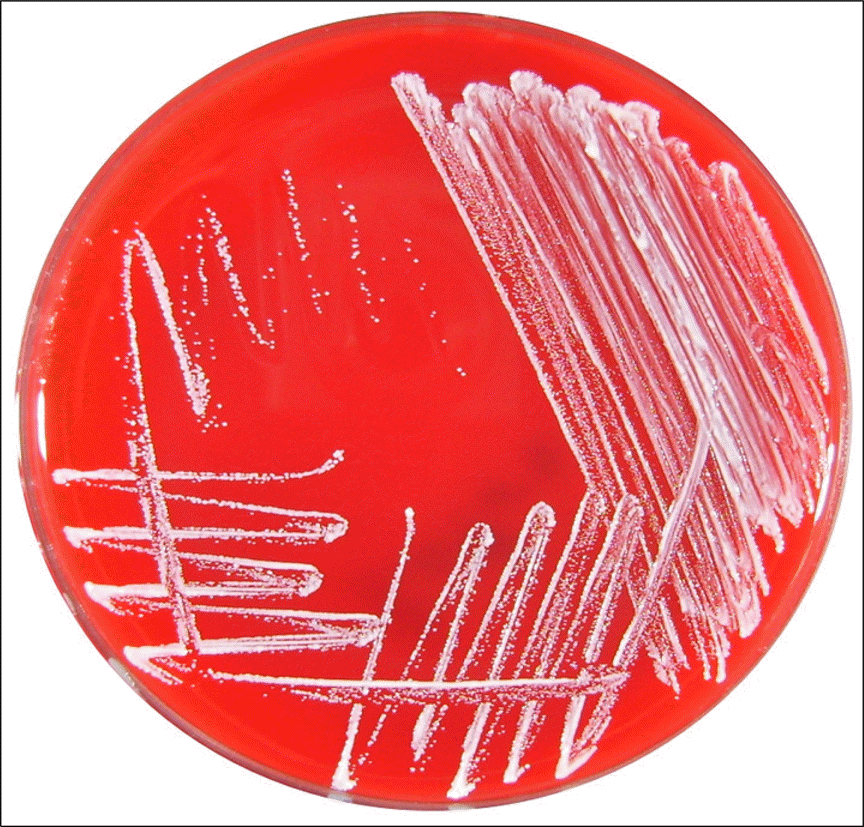Abstract
Rothia dentocariosa, a pleomorphic gram-positive branching bacillus, is a common inhabitant of the nose and throat. It is a well-known causative agent of dental plaques and periodontal diseases. Although generally regarded as having a low virulence to humans, R. dentocariosa has been recognized as causative agents of in-fective endocarditis and bacteremia with increasing frequency. Consequently, it can be a very serious pathogen when isolated from usually sterile sites such as blood or cerebrospinal fluid. We report a case of Rothia dentocariosa bacteremia without endocarditis in a 17-month-old male patient with fever, vomiting and diarrhea.
Go to : 
REFERENCES
1. Onishi M. Study of the Actinomyces isolated from the deeper layer of carious dentine. Shikagaku Zasshi. 1949; 6:273–82.
2. Georg LK, Brown JM. Rothia gen nov, an aerobic genus of the family Actinomycetaceae. Int J Syst Bacteriol. 1967; 17:79–88.
3. von Graevenitz A. Rothia dentocariosa: taxonomy and differential diagnosis. Clin Microbiol Infect. 2004; 10:399–402.
4. Tanner ACR, Haffer C, Bratthall GT, Visconti RA, Socransky SS. A study of the bacteria associated with advancing periodontitis in man. J Clin Periodontol. 1979; 6:278–307.

5. Lesher RJ, Gerencser VF, Morrison DJ. Presence of Rothia dentocariosa strain 477 serotype 2 in gingiva of patients with inflammatory periodontal disease. J Dent Res. 1977; 56:189.
6. Lutwick LI, Rockhill RC. Abscess associated with Rothia dentocariosa. J Clin Microbiol. 1978; 8:612–3.
7. Scharfen J. Untraditional glucose fermenting actinomycetes as human pathogens-Part II: Rothia dentocariosa as a cause of abdominal actinomycosis and a pathogen for mice. Zentralbl Bakteriol [Orig A]. 1975; 233:80–92.
8. Llopis F, Carratala J. Vertebral osteomyelitis complicating Rothia dentocariosa endocarditis. Eur J Clin Microbiol Infect Dis. 2000; 19:562–3.
9. Wallet F, Perez T, Roussel-Delvallez M, Wallaert B, Courcol R. Rothia dentocariosa: two new cases of pneumonia revealing lung cancer. Scand J Infect Dis. 1997; 29:419–20.
10. Bibashi E, Kokolina E, Mitsopoulos E, Kontopoulou K, Sofianou D. Peritonitis due to Rothia dentocariosa in a patient receiving continuous ambulatory peritoneal dialysis. Clin Infect Dis. 1999; 28:696.
11. Ergin C, Sezer MT, Agalar C, Katirci S, Demirdal T, Yayli G. A case of peritonitis due to Rothia dentocariosa in a CAPD patient. Perit Dial Int. 2000; 20:242–3.
12. Isaacson JH, Grenko RT. Rothia dentocariosa endocarditis complicated by brain abscess. Am J Med. 1988; 84:352–4.
13. Binder D, Zbinden R, Widmer U, Opravil M, Krause M. Native and prosthetic valve endocarditis caused by Rothia dentocariosa: diagnostic and therapeutic considerations. Infection. 1997; 25:22–6.
14. Ferraz V, McCarthy K, Smith D, Koornhof HJ. Rothia dentocariosa endocarditis and aortic root abscess. J Infect. 1998; 37:292–5.
15. Shin JH, Shim JD, Kim HR, Sinn JB, Kook JK, Lee JN. Rothia dentocariosa septicemia without endocarditis in a neonatal infant with meconium aspiration syndrome. J Clin Microbiol. 2004; 43:4891–2.
16. Karlsson MD, Jacobsson B. Intrauterine fetal death associated with Rothia dentocariosa: a case report. Am J Obstet Gynecol. 2007; 197:e6–7.
17. Funke G, Bernard KA. Coryneform Gram-positive Rods. Murray PR, editor. eds.Manual of Clinical Microbiology. 9th ed.Washington D.C.: American Society for Microbiology;2007. p. 485–514.

18. Brown JM, Georg LK, Waters LC. Laboratory identification of Rothia dentocariosa and its occurrence in human clinical materials. Appl Microbiol. 1969; 17:150–6.
19. Lesher RJ, Gerencser MA, Gerencser VF. Morphological, biochemical, and serological characterization of Rothia dentocariosa. Int J Syst Bacteriol. 1974; 24:154–9.
20. Bernard KA, Bellefeuille M, Hollis DG, Daneshvar MI, Moss CW. Cellular fatty acid composition and phenotypic and cultural characterization of CDC fermentative coryneform groups 3 and 5. J Clin Microbiol. 1994; 32:1217–22.

21. Funke G, von Graevenitz A, Clarridge JE, Bernard KA. Clinical microbiology of coryneform bacteria. Clin Microbiol Rev. 1997; 10:125–59.

22. Madianos PN, Lieff S, Murtha AP, Boggess KA, Auten RL Jr, Beck JD, et al. Maternal periodontitis and prematurity. Part II: Maternal infection and fetal exposure. Ann Periodontol. 2001; 6:175–82.

23. Boudewijns M, Magerman K, Verhaegen J, Debrock G, Peetermans WE, Donkersloot P, et al. Rothia dentocariosa, endocarditis and mycotic aneurysms: case report and review of the literature. Clin Microbiol Infect. 2003; 9:222–9.
Go to : 




 PDF
PDF ePub
ePub Citation
Citation Print
Print





 XML Download
XML Download